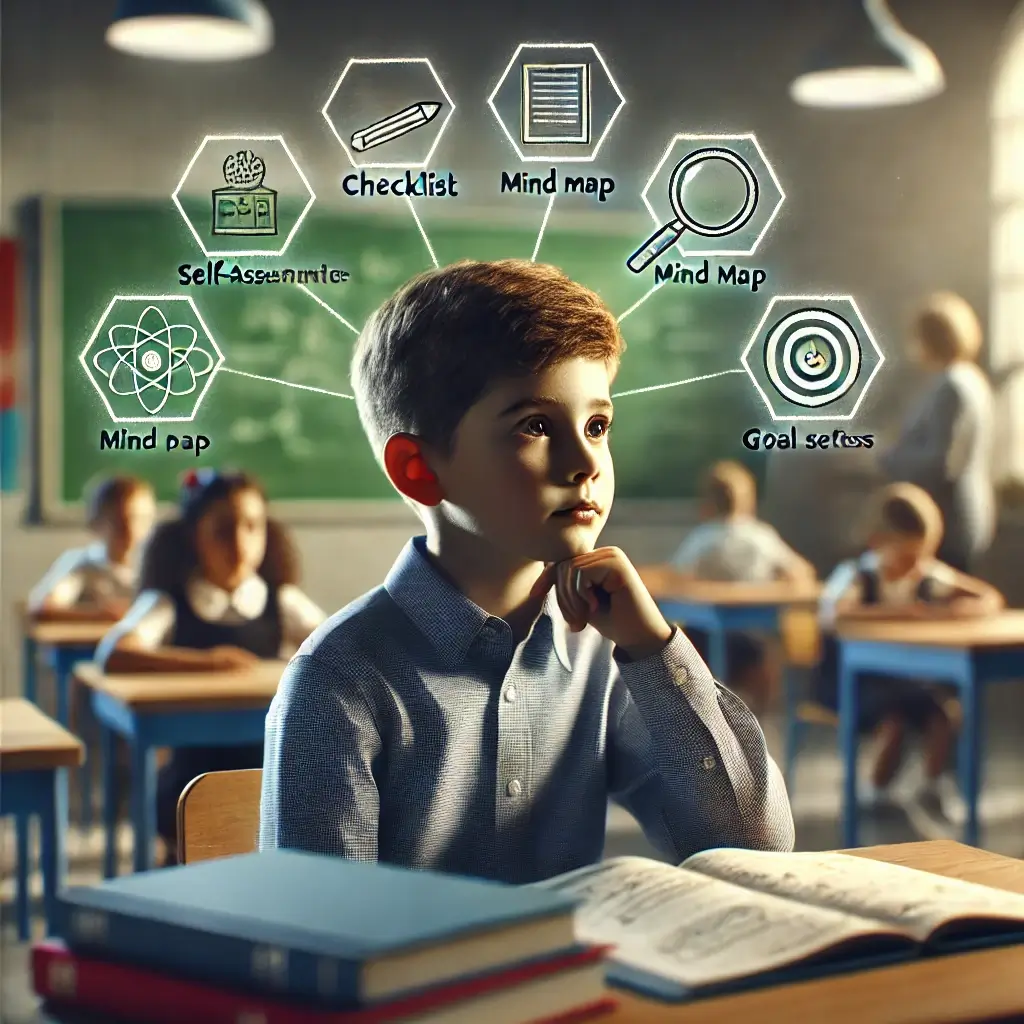The Power of Student Self-Awareness and Learning Regulation
Imagine a student who not only completes assignments but actively reflects on how they learn, identifies strategies that work best for them, and adapts to challenges. This self-awareness and ability to regulate one’s own learning are the hallmarks of metacognition—”thinking about thinking.” For elementary students, cultivating metacognitive skills for lifelong learning, enhancing not only academic performance but also problem-solving abilities and emotional resilience.
Taking Control of the Learning Journey
Metacognition empowers children to take control of their learning journey by recognizing their strengths and addressing weaknesses. It equips them with tools to set goals, monitor progress, and evaluate outcomes. At an age when cognitive abilities are rapidly developing, intentional practices for metacognitive skill development can accelerate the growth of metacognitive skills. This article explores how metacognition develops in elementary students and highlights evidence-based strategies for fostering this crucial skill.
Historical Development and Research Insights
The concept of metacognition was first introduced by John Flavell in the 1970s, who defined it as the ability to monitor and control cognitive processes. He emphasized three key components: Planning: Setting objectives and selecting appropriate strategies. Monitoring: Assessing comprehension and task progress. Evaluation: Reviewing and adjusting approaches as needed (Flavell, 1979).
Evolution of Metacognitive Understanding
Studies by Ann Brown and Annemarie Palincsar in the 1980s further enriched our understanding, demonstrating how reciprocal teaching through guided discussions can significantly enhance metacognitive skills (Brown & Palincsar, 1989). More recently, research by Marilyn Price-Mitchell underscores the importance of early, intentional metacognitive instruction, noting that while these abilities naturally develop with age, targeted teaching can produce measurable improvements (Price-Mitchell, 2017).
Recent Research and Academic Success
A 2021 study published in Educational Psychology Review highlighted the link between metacognition and academic achievement, showing that elementary students who practiced metacognitive strategies exhibited higher engagement and better problem-solving skills (Smith et al., 2021). This reinforces the need for educators and parents to integrate metacognitive practices into daily learning routines.
Understanding Task Performance and Metacognition
Another relevant study by Efklides (2008) explored the interplay between metacognitive experiences and task performance, revealing that students who actively reflect on their learning processes are better equipped to handle complex tasks. These findings highlight the developmental benefits of embedding metacognitive strategies in early education.
Practical Implementation Strategies
Parents and educators play a pivotal role in nurturing metacognitive skills in children. Here are actionable strategies: Think-Aloud Practices: Demonstrate how to approach problems by verbalizing your thought process. Encourage Reflection: Ask open-ended questions. Use Visual Aids: Tools like mind maps or graphic organizers. Introduce Self-Assessment Tools: Simple checklists or journals. Collaborative Learning Activities: Engage students in group discussions.
The Future of Learning
Metacognition transforms students into self-directed learners equipped with problem-solving confidence. By embedding metacognitive strategies into elementary education, we set children on a path to academic success and personal growth. The journey of metacognition is continuous, but with the right support, children can master the art of learning how to learn.
Call to Action for Education Stakeholders
Parents, educators, and policymakers must recognize the importance of fostering metacognition from an early developmental stage. With ongoing support and intentional practice, young learners can develop the skills they need to thrive in an ever-changing world.
Academic References
Brown, A. L., & Palincsar, A. S. (1989). Reciprocal teaching of comprehension-fostering and comprehension-monitoring activities. Cognition and Instruction, 8(1), 115–175.
Efklides, A. (2008). Metacognition—Defining its facets and levels of functioning in relation to self-regulation and co-regulation. European Psychologist, 13(4), 277–287.
Flavell, J. H. (1979). Metacognition and cognitive monitoring: A theoretical framework. Cognitive Psychology, 11(3), 297–322.
Novak, J. D., & Cánas, A. J. (2006). The theory underlying concept maps and how to construct them. Institute for Human and Machine Cognition.
Price-Mitchell, M. (2017). Metacognition: Nurturing self-awareness in the classroom. Edutopia.
Smith, J., Lee, R., & Johnson, P. (2021). Metacognition and student achievement: A longitudinal study in elementary education. Educational Psychology Review, 33(2), 345–367.
Veenman, M. V. J., Van Hout-Wolters, B. H. A. M., & Afflerbach, P. (2006). Metacognition and learning: Conceptual and methodological considerations. Metacognition and Learning, 1(1), 3–14.

